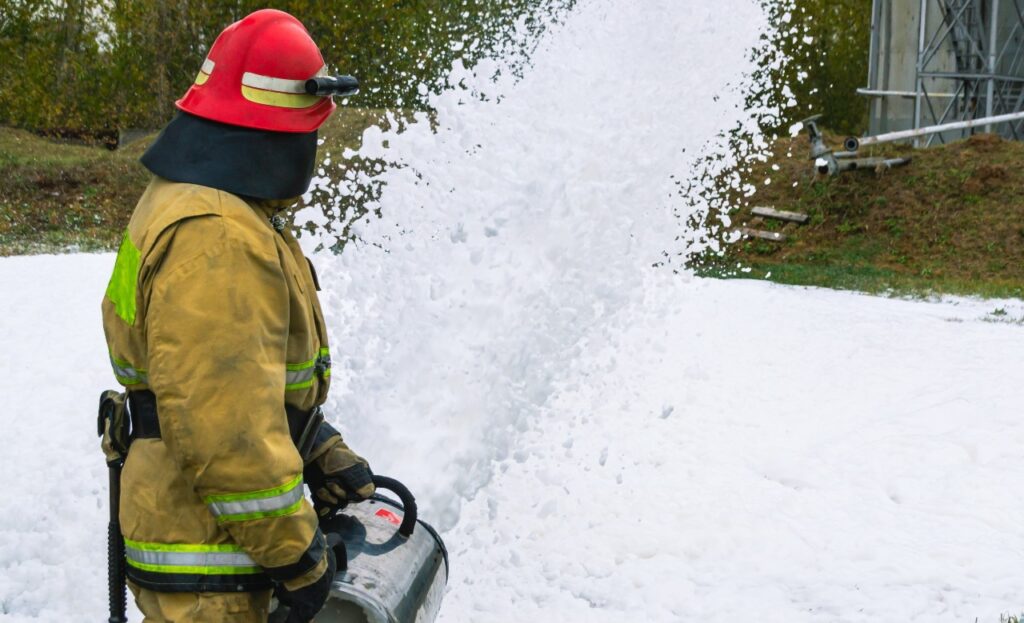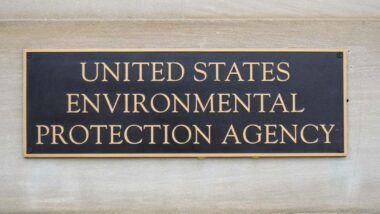PFAS exposure: Who’s affected?

Did you work as a firefighter? Did you live close to a military base as a member of the armed forces? Have you or a loved one suffered from PFAS-related cancer?
Aqueous film-forming foam, or AFFF, is a firefighting foam used to smother fires involving flammable liquids such as oil and gasoline. AFFF products are extremely effective but may pose health risks due to their per-and polyfluoroalkyl substances (PFAS) ingredients. PFAS chemicals have been linked to serious health conditions, including cancer.
Firefighters and residents of military bases who are members of the armed forces may have been exposed to dangerous levels of PFAS chemicals, putting them at risk for various health conditions. Individuals who were diagnosed with cancer or other conditions after PFAS exposure may be able to take legal action.
Do you qualify?
PFAS chemicals may cause the following health conditions:
- Kidney cancer
- Testicular cancer
- Prostate cancer
- Pancreatic cancer
- Liver cancer
- Bladder cancer
- Thyroid cancer
- Thyroid disease
- Ulcerative colitis
- Non-Hodgkin’s lymphoma
- Leukemia
- Breast cancer
If you were diagnosed with one of the conditions listed above after working as a firefighter or living on or near a military base as a member of the armed forces, you may be eligible to join this firefighting foam PFAS class action lawsuit investigation.
Please fill out the form on this page for more information.
What are PFAS chemicals?
PFAS are chemicals that are highly resistant to heat, oil, stains, grease and water. As a result, PFAS coatings are common on nonstick cooking surfaces, electrical wires and other products. Although these chemicals are useful in product manufacturing, they may pose a serious threat to the environment and to public health.
PFAS chemicals, including perfluorooctane sulfonic acid (PFOS) and perfluorooctanoic acid (PFOA), do not break down in the environment, earning them the name “forever chemicals.” Because these forever chemicals do not break down in the environment, they can easily contaminate soil and drinking water when businesses fail to contain or dispose of them properly. When PFAS chemicals contaminate groundwater sources, thousands or even millions of consumers can unknowingly become exposed to the substances by drinking water.
Research shows that most Americans have some level of PFAS chemicals in their bodies through accidental exposure. According to monitoring by the Centers for Disease Control and Prevention (CDC) since 1999, PFAS were found in the blood serum of nearly all study participants.
Unfortunately, these chemicals are not harmless. Research shows that PFAS exposure may cause serious health issues, including cancer.
What health concerns are linked to PFAS exposure?
According to the Environmental Protection Agency (EPA), PFAS chemicals may cause reproductive issues, developmental problems in children, reduced immune function, hormone disruption and increased cholesterol. In addition to these concerns, there are a number of illnesses and cancers linked to PFAS exposure.
The conditions most highly linked to PFAS exposure include:
- Kidney cancer
- Testicular cancer
- Prostate cancer
- Pancreatic cancer
- Liver cancer
- Bladder cancer
- Thyroid cancer
- Thyroid disease
Other diseases potentially linked with the chemicals include:
- Ulcerative colitis
- Non-Hodgkin’s lymphoma
- Leukemia
- Breast cancer
How were firefighters exposed to PFAS?
Although anyone can be exposed to PFAS chemicals through water and food contamination, firefighters may be at an increased risk of exposure due to the PFAS found in firefighting foam. Aqueous film-forming foam (AFFF) fights flammable liquid fires by smothering the fire using PFAS chemicals such as PFOS and PFOA.
Although AFFF is an effective way to fight fires and has been used for decades by firefighters, health concerns linked to PFAS caused some fire departments to stop using these products. The U.S. Fire Administration acknowledges the risks of PFAS exposure and recommends safety measures, including personal protective equipment and contamination management. In addition, after decades of requiring AFFF use at airports, the Federal Aviation Administration urged airports to stop or limit the use of these products in 2021.
In November 2023, the FAA gave the official “OK” to airports to use alternative firefighting foam products that effectively handle liquid fires without the use of PFAS chemicals. The new fluorine-free foams have been researched by the FAA and the Department of Defense as an effective alternative to the AFFF that has been used for decades. With the FAA’s new regulations, airports can protect firefighters, drinking water and the environment from PFAS contamination.
Many states have banned the use, sale, testing and training of AFFF foams to prevent future PFAS contamination. Some states are taking a more proactive approach by trying to eliminate existing PFAS contamination sites in addition to banning the usage of AFFF. In July 2023, New Hampshire partnered with Revive Environmental to use the company’s new “PFAS Annihilator” to remove 10,000 gallons of AFFF through a takeback program. This new technology breaks down PFAS products into safer, easier-to-dispose byproducts using high temperatures and pressures.
Despite these recent measures to prevent PFAS exposure, firefighters who used AFFF as far back as 1960 may have been exposed to large amounts of PFAS chemicals during their careers. Firefighters who were diagnosed with PFAS-related health conditions could take legal action.
How were military base residents exposed to PFAS?
Firefighters are not the only people who were exposed to PFAS while on the job. Individuals may have been exposed to PFAS chemicals while living on military bases across America.
According to the Environmental Working Group (EWG), military regulations required the use of AFFF in training exercises for more than five decades. As a result, the soil and groundwater at numerous military bases have been found to contain PFAS contamination. The Department of Defense agreed to stop purchasing PFAS AFFF and phase out the products by 2024, but for many service members and their families, the damage is already done.
Although hundreds of bases may have detectable PFAS levels, military bases with the strongest levels of PFAS chemicals include:
- Alameda Naval Base (California)
- Chanute Air Force Base (Illinois)
- China Lake Naval Base (California)
- Dallas Naval Base (Texas)
- Dover Air Force Base (Delaware)
- Eielson Air Force Base (Alaska)
- Ellsworth Air Force Base (South Dakota)
- England Air Force Base (Louisiana)
- Jacksonville Naval Base (Florida)
- Joint Base Langley-Eustis (Virginia)
- Joint Base San Antonio (Texas)
- Lackland Air Force Base
- Randolph Air Force Base
- Fort Sam Houston
- Camp Bullis
- Moody Air Force Base (Georgia)
- NAS Oceana Naval Base (Virginia)
- Patrick Air Force Base (Florida)
- Pease Air Force Base (New Hampshire)
- Peterson Air Force Base (Colorado)
- Plattsburgh Air Force Base (New York)
- Port Hueneme Naval Base (California)
- Richards-Gebaur Air Force Base (Missouri)
- Seymour Johnson Air Force Base (North Carolina)
- Wright-Patterson Air Force Base (Ohio)
- Wurtsmith Air Force Base (Michigan)
- Myrtle Beach Air Force Base (South Carolina)
Individuals who lived on or near these military bases for at least a year and who were members of the armed forces could have been exposed to dangerous levels of PFAS chemicals through drinking water and soil contamination. Residents who later developed cancer or other PFAS-related health concerns may be able to take legal action.
PFAS exposure may lead to a number of health concerns, including:
- Kidney cancer
- Testicular cancer
- Prostate cancer
- Pancreatic cancer
- Liver cancer
- Bladder cancer
- Thyroid cancer
- Thyroid disease
- Ulcerative colitis
- Non-Hodgkin’s lymphoma
- Leukemia
- Breast cancer
Individuals who were diagnosed with one or more of these conditions following PFAS exposure may be able to take legal action. Deceased individuals who were active military may also be able to take legal action, depending on state statutes of limitation.
If you developed one of the cancers or diseases listed above after being exposed to PFAS as a firefighter or while living on or near a military base, you may qualify to participate in this PFAS class action lawsuit investigation.
Please fill out the form on this page to see if you qualify for a FREE case evaluation.
GET HELP – IT’S FREE
Join a Firefighting Foam lawsuit investigation
If you qualify, an attorney will contact you to discuss the details of your potential case at no charge to you.
After you fill out the form, an attorney(s) or their agent(s) may contact you to discuss your legal rights.
ATTORNEY ADVERTISING
The choice of a lawyer is an important decision and should not be based solely on advertisements.
PAID ATTORNEY ADVERTISEMENT: THIS WEB PAGE IS AN ADVERTISEMENT AND THE PARTICIPATING ATTORNEY(S) ARE INCLUDED BECAUSE THEY PAY AN ADVERTISING FEE. Top Class Actions is not a law firm, lawyer referral service, or prepaid legal services plan. We do not endorse or recommend any third-party claims processing company, lawyer, or law firm who participates in the network. We do not make any representation, and have not made any judgment, as to the qualifications, expertise, or credentials of any participating lawyer or processing group. No representation is made that the quality of the legal services or claims processing to be performed is greater than the quality of legal services or claims processing performed by other lawyers or claims processing group. The information contained herein is not legal advice. Any information you submit to Top Class Actions does not create an attorney-client relationship and may not be protected by attorney-client privilege because Top Class Actions is not a law firm. Instead, your information will be forwarded to an attorney(s) or their agent(s) or a claims processing firm for the purpose of a confidential review and potential representation if you qualify. You will only be contacted by an attorney(s) or their agent(s) in response to your inquiry if your initial information appears to qualify you for representation. If you are not contacted by an attorney(s) or their agent(s) within one week, you should consult another firm since all legal claims are subject to filing deadlines. All photos on this website are stock art and do not depict clients.












